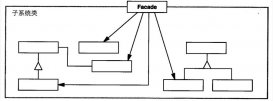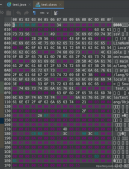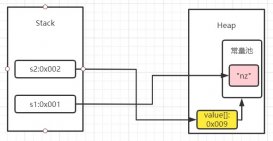首先Spring AOP有两个重要的基础接口,Advisor和PointcutAdvisor,接口声明如下:
Advisor接口声明:
|
1
2
3
4
5
|
public interface Advisor { Advice getAdvice(); boolean isPerInstance();} |
PointcutAdvisor的接口声明:
|
1
2
3
4
5
6
7
8
|
public interface PointcutAdvisor extends Advisor { /** * Get the Pointcut that drives this advisor. */ Pointcut getPointcut();} |
PointcutAdvisor用来获取一个切点以及这个切点的处理器(Advise)。
@Async注解使用后置处理器BeanPostProcessor的子类AsyncAnnotationBeanPostProcessor来实现bean处理 :
AsyncAnnotationAdvisor继承了PointcutAdvisor接口。并且在AsyncAnnotationBeanPostProcessor实现了其父类接口的BeanFactoryAware中的setBeanFactory初始化。Spring一旦创建beanFactory回调成功,就会回调这个方法。保证Advisor对象最先被初始化。
|
1
2
3
4
5
6
7
8
9
10
11
12
13
|
@Override public void setBeanFactory(BeanFactory beanFactory) { super.setBeanFactory(beanFactory); AsyncAnnotationAdvisor advisor = new AsyncAnnotationAdvisor(this.executor, this.exceptionHandler); if (this.asyncAnnotationType != null) { advisor.setAsyncAnnotationType(this.asyncAnnotationType); } advisor.setBeanFactory(beanFactory); this.advisor = advisor; }} |
具体的后置处理是通过AsyncAnnotationBeanPostProcessor的后置bean处理是通过其父类AbstractAdvisingBeanPostProcessor来实现的。AbstractAdvisingBeanPostProcessor提供的后置bean处理方法对所有的自定义注解的bean处理方法时通用的。其具体的代码如下:
|
1
2
3
4
5
6
7
8
9
10
11
12
13
14
15
16
17
18
19
20
21
22
23
24
25
26
27
28
29
30
31
32
33
34
|
@Override public Object postProcessAfterInitialization(Object bean, String beanName) { if (bean instanceof AopInfrastructureBean) { // Ignore AOP infrastructure such as scoped proxies. return bean; } /* * bean对象如果是一个ProxyFactory对象。ProxyFactory继承了AdvisedSupport,而 AdvisedSupport又继承了Advised接口。这个时候就把不同的Advisor添加起来。 * if (bean instanceof Advised) { Advised advised = (Advised) bean; if (!advised.isFrozen() && isEligible(AopUtils.getTargetClass(bean))) { // Add our local Advisor to the existing proxy's Advisor chain... if (this.beforeExistingAdvisors) { advised.addAdvisor(0, this.advisor); } else { advised.addAdvisor(this.advisor); } return bean; } } if (isEligible(bean, beanName)) { ProxyFactory proxyFactory = prepareProxyFactory(bean, beanName); if (!proxyFactory.isProxyTargetClass()) { evaluateProxyInterfaces(bean.getClass(), proxyFactory); } proxyFactory.addAdvisor(this.advisor); customizeProxyFactory(proxyFactory); return proxyFactory.getProxy(getProxyClassLoader()); } |
可以看得出来,isEligible用于判断这个类或者这个类中的某个方法是否含有注解。这个方法最终进入到AopUtils的canApply方法中间:
|
1
2
3
4
5
6
7
8
9
10
11
12
13
|
public static boolean canApply(Advisor advisor, Class<?> targetClass, boolean hasIntroductions) { if (advisor instanceof IntroductionAdvisor) { return ((IntroductionAdvisor) advisor).getClassFilter().matches(targetClass); } else if (advisor instanceof PointcutAdvisor) { PointcutAdvisor pca = (PointcutAdvisor) advisor; return canApply(pca.getPointcut(), targetClass, hasIntroductions); } else { // It doesn't have a pointcut so we assume it applies. return true; } } |
这里的advisor就是AsyncAnnotationAdvisor对象。然后调用AsyncAnnotationAdvisor对象的getPointcut()方法,得到了Pointcut对象。在AOP规范中间,表示一个具体的切点。那么在方法上注释@Async注解,就意味着声明了一个切点。
然后再根据Pointcut判断是否含有指定的注解。
切点的执行
由于生成了JDK动态代理对象,那么每一个方法的执行必然进入到JdkDynamicAopProxy中的invoke方法中间去执行:
|
1
2
3
4
5
6
7
8
9
10
11
12
13
14
15
16
17
18
19
20
21
22
23
24
25
26
27
28
29
30
31
32
33
34
35
36
37
38
39
40
41
42
43
44
45
46
47
48
49
50
51
52
53
54
55
56
57
58
59
60
61
62
63
64
65
66
67
68
69
70
71
72
73
74
75
76
77
78
79
80
81
82
83
84
85
86
87
88
89
|
@Override public Object invoke(Object proxy, Method method, Object[] args) throws Throwable { MethodInvocation invocation; Object oldProxy = null; boolean setProxyContext = false; TargetSource targetSource = this.advised.targetSource; Class<?> targetClass = null; Object target = null; try { if (!this.equalsDefined && AopUtils.isEqualsMethod(method)) { // The target does not implement the equals(Object) method itself. return equals(args[0]); } else if (!this.hashCodeDefined && AopUtils.isHashCodeMethod(method)) { // The target does not implement the hashCode() method itself. return hashCode(); } else if (method.getDeclaringClass() == DecoratingProxy.class) { // There is only getDecoratedClass() declared -> dispatch to proxy config. return AopProxyUtils.ultimateTargetClass(this.advised); } else if (!this.advised.opaque && method.getDeclaringClass().isInterface() && method.getDeclaringClass().isAssignableFrom(Advised.class)) { // Service invocations on ProxyConfig with the proxy config... return AopUtils.invokeJoinpointUsingReflection(this.advised, method, args); } Object retVal; if (this.advised.exposeProxy) { // Make invocation available if necessary. oldProxy = AopContext.setCurrentProxy(proxy); setProxyContext = true; } // May be null. Get as late as possible to minimize the time we "own" the target, // in case it comes from a pool. target = targetSource.getTarget(); if (target != null) { targetClass = target.getClass(); } // Get the interception chain for this method. List<Object> chain = this.advised.getInterceptorsAndDynamicInterceptionAdvice(method, targetClass); // Check whether we have any advice. If we don't, we can fallback on direct // reflective invocation of the target, and avoid creating a MethodInvocation. if (chain.isEmpty()) { // We can skip creating a MethodInvocation: just invoke the target directly // Note that the final invoker must be an InvokerInterceptor so we know it does // nothing but a reflective operation on the target, and no hot swapping or fancy proxying. Object[] argsToUse = AopProxyUtils.adaptArgumentsIfNecessary(method, args); retVal = AopUtils.invokeJoinpointUsingReflection(target, method, argsToUse); } else { // We need to create a method invocation... invocation = new ReflectiveMethodInvocation(proxy, target, method, args, targetClass, chain); // Proceed to the joinpoint through the interceptor chain. retVal = invocation.proceed(); } // Massage return value if necessary. Class<?> returnType = method.getReturnType(); if (retVal != null && retVal == target && returnType.isInstance(proxy) && !RawTargetAccess.class.isAssignableFrom(method.getDeclaringClass())) { // Special case: it returned "this" and the return type of the method // is type-compatible. Note that we can't help if the target sets // a reference to itself in another returned object. retVal = proxy; } else if (retVal == null && returnType != Void.TYPE && returnType.isPrimitive()) { throw new AopInvocationException( "Null return value from advice does not match primitive return type for: " + method); } return retVal; } finally { if (target != null && !targetSource.isStatic()) { // Must have come from TargetSource. targetSource.releaseTarget(target); } if (setProxyContext) { // Restore old proxy. AopContext.setCurrentProxy(oldProxy); } } } |
重点的执行语句:
|
1
2
3
4
5
6
7
8
9
10
11
12
13
14
15
16
17
18
19
|
// 获取拦截器 List<Object> chain = this.advised.getInterceptorsAndDynamicInterceptionAdvice(method, targetClass); // Check whether we have any advice. If we don't, we can fallback on direct // reflective invocation of the target, and avoid creating a MethodInvocation. if (chain.isEmpty()) { // We can skip creating a MethodInvocation: just invoke the target directly // Note that the final invoker must be an InvokerInterceptor so we know it does // nothing but a reflective operation on the target, and no hot swapping or fancy proxying. Object[] argsToUse = AopProxyUtils.adaptArgumentsIfNecessary(method, args); retVal = AopUtils.invokeJoinpointUsingReflection(target, method, argsToUse); } else { // 根据拦截器来执行 invocation = new ReflectiveMethodInvocation(proxy, target, method, args, targetClass, chain); // Proceed to the joinpoint through the interceptor chain. retVal = invocation.proceed(); } |
@Async注解的拦截器是AsyncExecutionInterceptor,它继承了MethodInterceptor接口。而MethodInterceptor就是AOP规范中的Advice(切点的处理器)。
自定义注解
由于其bean处理器是通用的,所以只要实现PointcutAdvisor和具体的处理器就好了。首先自定义一个注解,只要方法加入了这个注解,就可以输出这个方法的开始时间和截止时间,注解的名字叫做@Log:
|
1
2
3
4
5
6
|
@Target({ElementType.METHOD, ElementType.TYPE})@Retention(RetentionPolicy.RUNTIME)@Documentedpublic @interface Log {} |
定义一个简单的方法用于测试:
|
1
2
3
4
5
6
7
8
9
10
11
12
13
14
15
16
17
18
19
20
21
22
23
24
|
public interface IDemoService { void add(int a, int b); String getName();}@Servicepublic class DemoServiceImpl implements IDemoService { @Log public void add(int a, int b) { System.out.println(Thread.currentThread().getName()); System.out.println(a + b); } @Override public String getName() { System.out.println("DemoServiceImpl.getName"); return "DemoServiceImpl"; }} |
定义Advisor:
|
1
2
3
4
5
6
7
8
9
10
11
12
13
14
15
16
17
18
19
20
21
22
23
24
25
26
27
28
29
30
31
32
33
34
35
36
37
38
39
40
41
42
43
44
45
46
47
48
49
50
51
52
|
public class LogAnnotationAdvisor extends AbstractPointcutAdvisor { private Advice advice; private Pointcut pointcut; public LogAnnotationAdvisor() { this.advice = new LogAnnotationInterceptor(); } @Override public Advice getAdvice() { return this.advice; } @Override public boolean isPerInstance() { return false; } @Override public Pointcut getPointcut() { return this.pointcut; } public void setAsyncAnnotationType(Class<? extends Annotation> asyncAnnotationType) { Assert.notNull(asyncAnnotationType, "'asyncAnnotationType' must not be null"); Set<Class<? extends Annotation>> asyncAnnotationTypes = new HashSet<Class<? extends Annotation>>(); asyncAnnotationTypes.add(asyncAnnotationType); this.pointcut = buildPointcut(asyncAnnotationTypes); } protected Pointcut buildPointcut(Set<Class<? extends Annotation>> asyncAnnotationTypes) { ComposablePointcut result = null; for (Class<? extends Annotation> asyncAnnotationType : asyncAnnotationTypes) { Pointcut cpc = new AnnotationMatchingPointcut(asyncAnnotationType, true); Pointcut mpc = AnnotationMatchingPointcut.forMethodAnnotation(asyncAnnotationType); if (result == null) { result = new ComposablePointcut(cpc).union(mpc); } else { result.union(cpc).union(mpc); } } return result; }} |
定义具体的处理器:
|
1
2
3
4
5
6
7
8
9
10
11
12
13
14
15
16
17
|
public class LogAnnotationInterceptor implements MethodInterceptor, Ordered { @Override public int getOrder() { return Ordered.HIGHEST_PRECEDENCE; } @Override public Object invoke(MethodInvocation invocation) throws Throwable { System.out.println("开始执行"); Object result = invocation.proceed(); System.out.println("结束执行"); return result; }} |
定义@Log专属的BeanPostProcesser对象:
|
1
2
3
4
5
6
7
8
9
10
11
12
13
14
15
|
@SuppressWarnings("serial")@Servicepublic class LogAnnotationBeanPostProcesser extends AbstractBeanFactoryAwareAdvisingPostProcessor { @Override public void setBeanFactory(BeanFactory beanFactory) { super.setBeanFactory(beanFactory); LogAnnotationAdvisor advisor = new LogAnnotationAdvisor(); advisor.setAsyncAnnotationType(Log.class); this.advisor = advisor; }} |
对bean的后置处理方法直接沿用其父类的方法。当然也可以自定义其后置处理方法,那么就需要自己判断这个对象的方法是否含有注解,并且生成代理对象:
|
1
2
3
4
5
6
7
8
9
10
11
12
13
14
15
16
17
18
19
|
@Override public Object postProcessAfterInitialization(Object bean, String beanName) { Method[] methods = ReflectionUtils.getAllDeclaredMethods(bean.getClass()); for (Method method : methods) { if (method.isAnnotationPresent(Log.class)) { ProxyFactory proxyFactory = prepareProxyFactory(bean, beanName); System.out.println(proxyFactory); if (!proxyFactory.isProxyTargetClass()) { evaluateProxyInterfaces(bean.getClass(), proxyFactory); } proxyFactory.addAdvisor(this.advisor); customizeProxyFactory(proxyFactory); return proxyFactory.getProxy(getProxyClassLoader()); } } return bean; } |
测试注解是否是正常运行的:
|
1
2
3
4
5
6
7
8
9
10
11
12
13
|
public class Main { public static void main(String[] args) { @SuppressWarnings("resource") ClassPathXmlApplicationContext context = new ClassPathXmlApplicationContext("application-context.xml"); IDemoService demoService = context.getBean(IDemoService.class); demoService.add(1, 2); demoService.getName();//// AsyncAnnotationAdvisor// AsyncAnnotationBeanPostProcessor }} |
输出:
|
1
2
3
4
5
|
开始执行main3结束执行DemoServiceImpl.getName |
功能一切正常。
以上就是本文的全部内容,希望对大家的学习有所帮助,也希望大家多多支持服务器之家。
原文链接:http://www.jianshu.com/p/3b2b881cd78f?utm_source=tuicool&utm_medium=referral















